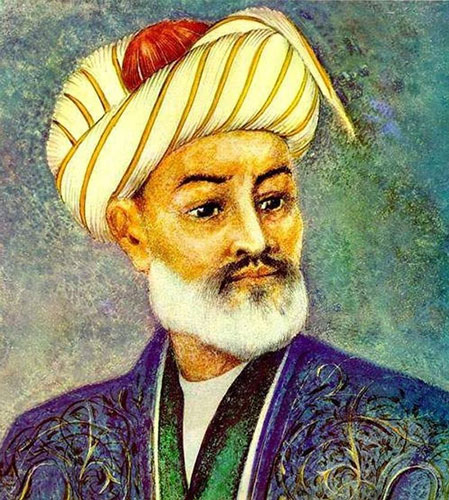
АLISHER NAVOI
(1441-1501)
Great poet and thinker, statesman, full name Nizamiddin Mir Alisher created under the pseudonym Navoi in chigatoy (old Uzbek language), as well as in Persia (in Persian works) under the pseudonym Fani. He started writing poetry at the age of 10-12. During his life, the Ruler of Khorasan in 1469 appoints Nawai as the state sealer, 1472 becomes the minister. 1487 is sent to Astrabad as a ruler. Here he serves for two years. 1490-1501 Navoi created the most elegant, socio-philosophical and scientific works. The work of Alisher Navoi is incredibly huge.
It is no coincidence that Alisher Navoi deeply understood the purely scientific issues of the field of musicology – genres, musical forms of the past, instrumentation, performance criteria, statuses, compositional creativity-and expressed specific terms and conquests in their musical meaning. After all, it should be remembered that in the Navoi family there were persons who were aware of music. The fact that the poet’s maternal grandfather Sheikh Abusaid Chang (Sheikh), uncle Muhammad Ali Gharibi and nephew Haydarbek sozanda, hofiz, composer and created a number of musical treatises is noted in the sources. It is known from “Majolis un – nafois” that Nawai borrowed musical creativity from one of the allomas of the time, Khoja Yusuf Burhan. In addition to musical paths, the sources also write about the discovery of seven methods by Navoi for statuses – Navo, Isfahan, nogora. In the “Khazoyin ul-maoniy”, which summarizes his lyrical statements, in the epics of liro-his epic legacy, one can consistently find musical conquests in his scientific-historical, philosophical works – “Majolis un-nafois”, “Lison ut-tayr”, “Holoti Pahlavon Muhammad”, “Mahbub ul-qulub”. After all, in his work, musicology, in a wider scope – expressions characteristic of art studies, thoughtful thoughts and direct approaches are expressed in a reasonable way. Navoi cited past musical forms and genres such as naqsh, tarona, song, chorysiya, lahn, amal, kor, Sofiya, qawl, yir, chinga. Also, the names of words expressed in the works of Alisher Navoi, their tone characteristics, definitions given to their appearance enrich the history of instrumental music with new information. These include UD, chang, nai, daf, nogora, kannora, naqqora, kovurgo, chagona, musikor, womangu, rud, sur, arghanun. By the time the poet’s time coincided with the “golden” period of composing, dozens of mature composers had matured. Navoi in his tazkira” Majolis un-nafois ” gave a worthy assessment of the talent of 459 of them. The musical abilities of Mavlono Sahib Balkhiy, Khoja Yusuf Burhon, Mavlono Biniy, Mavlono Solimi, Pahlavon Muhammad, Ustad Qulmuhammad, Khoja Kamoliddin Husayn, Khoja Abdulwafoyi Khwarazmiy, Mavlono ancient, Hofiz Sharbiy, Khoja Kamoliddin Udi, Ali Karmols are separately noted. Under the guidance of the poet, many musical treatises were written. But none of them were able to match the Treatise of their teacher Abdurahman Jami, which Navoi acknowledged in “Khamsat ul-mutahayyirin”. Navoi’s Works emphasized such statuses as Rost, Navo, Hejaz, Iraq, Ajam, Husayni, which were popular at the time. The great and great poet, thinker and major public figure Mir Alisher Navoi was also a major scientist in the science of musicology.
